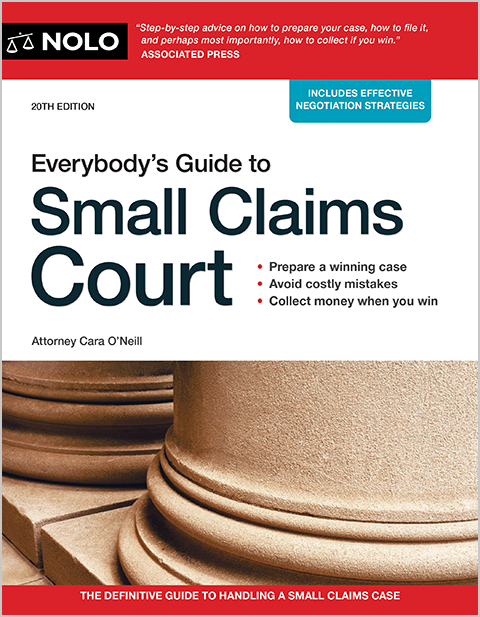An in-depth look at how an injured driver or passenger's failure to wear a seatbelt could affect a car accident injury claim against the at-fault driver.
You can still file a car insurance claim or personal injury lawsuit against the at-fault driver if you're injured in a car accident and you weren't wearing your seatbelt. But depending on the law in your state, and the nature of your injuries, your failure to buckle up could have a big impact on the amount of compensation you can recover.
Car Insurance Claims Versus Personal Injury Lawsuits
If you're injured in a car accident, and the at-fault driver is insured, you likely have a number of options for getting compensation for your losses stemming from the crash—including your medical bills, lost income, "pain and suffering" and other "damages."
Most car accident cases start as an insurance claim filed with the at-fault driver's car insurance company. This is called a "third party" car insurance claim, and once you file it, a claims adjuster will conduct an investigation to determine:
- how the accident happened (including who was at fault for the crash), and
- the nature and extent of your claimed injuries.
Can I Make a Car Accident Claim If I Wasn't Wearing a Seatbelt?
As we touched on earlier, the answer here is yes, you can make an insurance claim or even file a lawsuit over your car accident injuries if you weren't wearing a seatbelt during the crash.
After the insurance company investigates the accident and your claim, they'll probably either deny your claim or offer you a certain amount to settle it. This is the stage at which your failure to wear a seatbelt will likely first come into play.
If the settlement offer seems unfairly low (and the adjuster points to your seatbelt law violation as one factor behind the number), you can try to negotiate a better deal yourself, or put your case in the hands of an experienced personal injury attorney who will evaluate the situation and your options, including taking the matter to court via a personal injury lawsuit.
Regardless of which route you choose, your failure to wear a seatbelt may prevent you from receiving a better financial outcome—either through an out-of-court settlement or by way of a court judgment in the rare event that your lawsuit goes to trial—largely because of a legal concept often called the "seatbelt defense."
What Is the "Seatbelt Defense"
The "seatbelt defense" refers to the insurance company's (or the defendant's, if you've filed a lawsuit in court) use of evidence regarding your failure to wear a seatbelt in connection with the underlying accident. The theory behind the seatbelt defense is that, even though you may not have caused the accident itself, your failure to wear a seatbelt contributed to the severity of your car accident injuries.
Not all states allow use of the seatbelt defense, and keep in mind that even in states that do allow it, the adjuster is not required to apply it when negotiating a settlement. But the seatbelt defense will certainly be on the mind of the adjuster. That's because if the claim can't be settled and a lawsuit is filed, the adjuster knows that use of the seatbelt defense will be allowed by the court, and will impact how much the insurance company may ultimately have to pay.
Is Not Wearing a Seatbelt Considered Negligence?
Under a legal concept known as "comparative fault," the amount you can recover for your injuries is reduced by a percentage that reflects your degree of fault for failing to wear a seatbelt. There are two types of comparative fault: "pure comparative fault" and "modified comparative fault."
In states that follow the "pure" comparative fault rule, each party is responsible for their percentage of fault—no matter what that percentage may be. For example, let's say your injuries are found to be almost entirely due to your failure to wear a seatbelt. You're deemed 75% at fault, and the other driver is considered 25% at fault. In that situation, in a "pure" comparative fault state you can recover only 25% of your damages. Under "modified" comparative fault, each party is still responsible for damages in proportion to their own share of fault. but if your share of liability reaches a certain designated percentage (50% or 51% depending on the state), you cannot recover any compensation at all from any other at-fault party.
(Note: A few states follow a much harsher rule known as "contributory negligence." In these states, an injured person's own negligence—even the slightest amount—eliminates their right to recover anything at all from other at-fault parties. But in these states, a car accident claimant's failure to wear a seatbelt usually can't be used as evidence of negligence.)
Learn more about comparative and contributory negligence in car accident cases.
Not Wearing a Seatbelt and "Mitigation"
In some states, including Wisconsin and Iowa, the seatbelt defense overlaps with the "mitigation" theory, which says that an injured person has a legal duty to use reasonable efforts to avoid or reduce his or her "damages." Under this theory, the at-fault driver's insurer (or attorney) would argue that you wouldn't have suffered the same injuries if you had worn your seatbelt, and so your financial recovery should be reduced.
Regardless of the legal theory that is relied upon, most states require that the at-fault driver prove a causal connection between your non-use of an available seatbelt and the injuries you suffered. It's no surprise that cases involving the seatbelt defense often require a close examination of the medical records and the use of expert witnesses.
Some States Don't Allow (or Limit) the Seatbelt Defense
As mentioned above, some states do not allow use of the seatbelt defense. In these states, your failure to wear a seatbelt can't be used as evidence of your negligence, and will not impact your financial recovery. Other states limit the financial consequences of not wearing a seatbelt if a personal injury lawsuit is filed. For example, in Wisconsin, an at-fault driver is entitled to assert the seatbelt defense, but it can only be used to reduce the plaintiff's damages award by 15%.
Does Not Wearing a Seatbelt as a Passenger Affect Your Car Accident Claim?
Yes. The same factors we've discussed so far (the seatbelt defense, shared fault, and the specifics of state laws) all apply pretty much equally to injury claims brought by drivers or passengers.
One difference with passenger car accident injury cases is that a claim might be brought against the driver of the car you were riding in, or against the driver of another vehicle involved in the crash. But you'll likely face the same arguments from the insurance company if you weren't wearing a seatbelt during the accident. Learn more about passenger injury claims after a car accident.
Can Not Wearing a Seatbelt Affect Your Insurance?
Absolutely. Especially if you were issued a traffic citation in connection with your failure to wear a seatbelt, there's a good chance your car insurance premium will go up.
Any behavior on your part can have this effect, it it can be seen as increasing the insurance company's risk in covering you. The insurance company's view can be summed up this way:
- wearing a seatbelt reduces the risk of greater injury in an accident
- you've demonstrated (at least once) that you don't always wear a seatbelt
- if you get into another accident, there's an increased chance you won't be wearing your seatbelt, so
- there's a bigger risk of greater injury to you, and
- that bigger risk could translate into increased costs to the insurer.
What's Next?
No matter what kind of issues might be at play in your car accident case, one of your first concerns is making sure you still have time to take legal action over your injuries. Check out the car accident laws in your state to understand the statute of limitations injury claim deadline that applies to your potential case.
If your state allows the at-fault driver to argue that your failure to wear a seatbelt makes you at least partially to blame for your car accident injuries, trying to overcome that argument on your own may not be your best strategy. Especially if your injuries are significant and the other side is digging in for a fight, it may be time to put your claim in the hands of an experienced car accident attorney.



